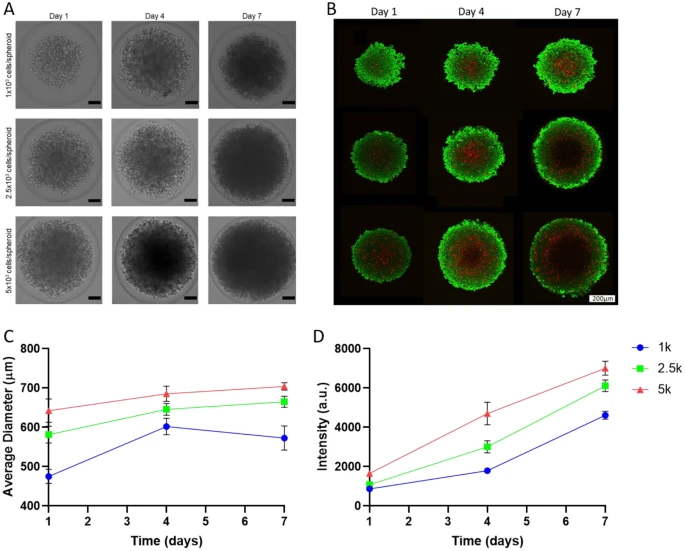In Vitro Release Evaluation Service
Are you currently facing long drug development cycles, off-target toxicities, insufficient drug release, or challenges in optimizing antibody-drug conjugates (ADCs)? Our in vitro release evaluation service helps you accelerate ADC development, optimize drug release profiles, and minimize systemic toxicity through a mechanism-based approach, advanced analytical techniques, 3D tumor models, and comprehensive conjugation site influence analysis.
Introduction
Controlled release of chemotherapeutic drugs is a key factor in cancer therapy, particularly for antibody-drug conjugates (ADCs). Our in vitro release evaluation service meticulously characterizes payload release kinetics, a critical determinant of an ADC's therapeutic index, directly impacting efficacy and safety. We employ a mechanism-based approach, considering factors like linker chemistry, conjugation site influence, and advanced 3D models to provide predictive insights into in vivo behavior, thereby optimizing drug design and minimizing systemic toxicity.
 Fig.1 Antibody linking strategy with cleavable properties.1
Fig.1 Antibody linking strategy with cleavable properties.1
In Vitro Release Evaluation Service at Creative Biolabs
At Creative Biolabs, our in vitro release evaluation service is designed to provide specific, actionable insights that directly address the complexities of ADC development. Using rigorously designed in vitro assays, we characterize both the rate and extent of active ingredient release under simulated physiological and tumor-specific conditions, including controlled variations in pH and enzymatic environments. We deliver optimized payload release kinetics, significantly reduce the risk of off-target toxicities, and enhance tumor-specific drug delivery. Our service provides the rational design guidance necessary to develop safer and more effective ADC candidates.
Our platform integrates:
- pH-dependent release modeling, mimicking systemic circulation (neutral pH) and acidic tumor or lysosomal environments to distinguish stability versus rapid payload release.
- Enzyme-triggered assays, employing human liver S9 fractions or specific proteases (e.g., cathepsin B) to simulate lysosomal cleavage and release from cleavable linkers
- Quantitative analytical platforms, such as liquid chromatography-tandem mass spectrometry (LC-MS/MS) and high-performance liquid chromatography (HPLC), for precise detection of released payload species over time.
Service Workflow

Representative Data
Summary: This study developed novel thermoresponsive N-isopropylacrylamide-based nanoparticles functionalized with folic acid for targeted and controlled doxorubicin delivery in triple-negative breast cancer (TNBC). In 2D models, folic acid-functionalized nanoparticles reduced IC50 by 77% compared to non-functionalized ones. In 3D spheroids, they effectively reduced tumor cells in a temperature-dependent manner, with better penetration than free drug. Conclusions: This nanoparticle system enables targeted, controlled doxorubicin delivery, enhancing efficacy in TNBC, even in 3D models with limited drug penetration.
 Fig.2 In vitro 3D cell models replicate the environment of natural solid tumors.2,3
Fig.2 In vitro 3D cell models replicate the environment of natural solid tumors.2,3
FAQs
What types of ADCs or drug delivery systems can your service evaluate?
We have extensive expertise in evaluating a wide array of ADCs, including those with cleavable (e.g., disulfide, protease-sensitive) and non-cleavable linkers, as well as various conjugation strategies (lysine, cysteine, site-specific). Our capabilities extend to other stimuli-responsive nanoparticle systems as well.
Is your analytical methodology sensitive enough for highly potent payloads used at low doses?
Absolutely. We utilize state-of-the-art immunoaffinity LC-MS/MS, which offers exceptional sensitivity and selectivity. Furthermore, we can optimize capture reagents, such as anti-CDR antibodies, to achieve even higher sensitivity required for low-dose, highly potent drug candidates in both preclinical and clinical studies.
How do your account for the complexity of the tumor microenvironment in your release studies?
Beyond standard 2D assays, we specialize in developing and utilizing advanced 3D spheroid models. These models better mimic the in vivo tumor architecture, allowing us to evaluate not just drug release from the carrier, but also its penetration and distribution within a more physiologically relevant tissue-like structure.
Why Choose Us?
Creative Biolabs stands as a leader in ADC characterization, offering unparalleled advantages and unique features that set our in vitro release evaluation service apart. Our commitment to scientific rigor, innovative methodologies, and client success ensures that your project benefits from the highest standards of expertise and precision.
Customer Reviews
"Creative Biolabs' expertise in 3D spheroid models for release evaluation is unparalleled. We struggled with drug penetration in our previous in vitro setups, but their service clearly demonstrated how our thermoresponsive nanoparticles achieved superior and temperature-dependent payload delivery within complex tumor models. This comparison with free drug performance was invaluable." [1 week ago], S***h K.
"The team at Creative Biolabs developed a bespoke chemical cleavage assay for our challenging disulfide-linked ADC. Their meticulous optimization of pH, temperature, and reducing agent concentration, combined with orthogonal LC/HC subunit analysis, ensured the highest accuracy. This level of detail and their robust validation process gave us complete confidence in our release data, unlike other providers we've tried." [4 months ago], L***a M.
How to Contact Us
Ready to advance your ADC program with precision insights? Contact our expert team today to discuss your specific project needs and discover how Creative Biolabs can empower your research and development.
References
- Tsuchikama, Kyoji, and Zhiqiang An. "Antibody-drug conjugates: recent advances in conjugation and linker chemistries." Protein & cell vol. 9,1 (2018): 33-46. DOI: https://doi.org/10.1007/s13238-016-0323-0
- Ribeiro, Tiago P et al. "Thermoresponsive nanoparticles for targeted and controlled delivery of doxorubicin in triple negative breast cancer: a 2D and 3D in vitro evaluation." Drug delivery and translational research, 10.1007/s13346-025-01930-9. 28 Jul. 2025. DOI: https://doi.org/10.1007/s13346-025-01930-9
- Distributed under Open Access License CC BY 4.0, without modification.
For research use only. Not intended for any clinical use.
This site is protected by reCAPTCHA and the Google Privacy Policy and Terms of Service apply.



